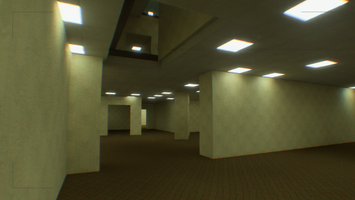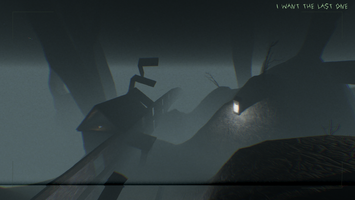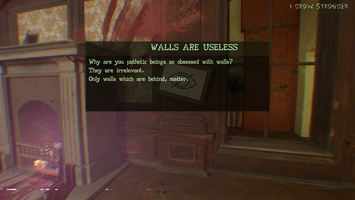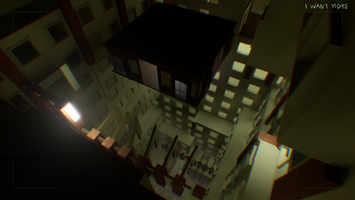Postmortem of The Backroom - Lost and Found




Greetings everyone!
7 months of development and 5 months of updates by one developer. How did we get here and what did we learn?
Something like 18 months ago I was watching Markiplier and admiring the work of Kane Pixel's backrooms. I've always been bit of a copypasta -fan and know lots about SCP -related matters. So, I though I could learn Unreal 5's new features and create a small game about the "Backrooms" at the same time. Markiplier has those 3 scary games and it would be cool to make a small scary game for him to play. Little did I know that it wouldn't be easy or a short journey.
A game that was supposed to take 2 weeks to make and be about 10 minutes worth of playtime grew and grew. Eventually, almost 500 hours later, the game called "The Backroom - Lost and Found" v.1.0.0 was done. Perhaps needless to say, at times it took a bit of a strain on the family relationship seeing I vanished behind the screen after work and eventually emerged when it was time to get to bed. However, the work finally came to a conclusion and the launch date was upon us. Little did I know I'd still spend about 5 more months working on the patches.
This somewhat perplexing creation of a game is free for anyone who enjoys liminal horror with some cute and Stanley Parabelish -elements. It is far longer than originally planned - people tend to spend a bit under two hours working their way through the perplexing corridors. I doubt Markiplier will ever play the game, but at least I get the share the story of how/why the game was created. Little did I know marketing would've actually mattered.
I thought I'd share some thoughts/learnings I came across during the development. Some are given, some are just mental notes, and some might be of some use. Also some are Unreal specific. I've used Unreal for about 3 years now. Everything is done in BP. Not a single code of C++ was written.
Scope and Features
Don't make your game 20x bigger unless you are prepared to spend the time needed for that. People in your family might not always appreciate the ... dedication. As the game becomes more game and less a tech demo, it starts eating a lot more polish-resources -> When a game becomes more polished, people start expecting more from it -> When people expect more from your game, you want to deliver more and better content.
Be wary when someone says "Wouldn't it be cool if the game had..." Everything is always fun to think about, but I listened to weird off-beat idea and that became the main gameplay mechanic and the reason the game is what it is. Sometimes you should listen. Other times run to the opposing direction. This is the bane of any passion-project - Feature Creep. It lurks behind every idea and every though. Fight it, but always assess it whether the work is worth the trouble.
Know and plan your scope. Retrofitting level streaming, main menu, and save game system is not the right way to do it. So many hacks needed to be implemented to make these work. When the game was still under 30 minutes, there was no need for save game. Longer game -> Level needs to be chopped into smaller ones -> Level streaming -> World state -> Needs checkpoints -> Saving & loading -> Main Menu -> ...
For example, the way the check point system is done is just plain awful and utterly non-expandable. If any coder would see how it is executed, they'd be in a small illogical horror scenario themselves. This is also, sadly, one of the major reasons I can't add any new missions/areas into the game anymore. A total clusterf*** of code and impossibly short-sighted decisions. While the save system allowed the game to grow to its current size, it is also the reason it cannot grow any larger.
After the Release - slide to insanity
Finally when the game is out, one starts thinking the game isn't good enough and it still has a more story tell. Instead of just accepting that the story ends there, I decided to do a New Game Plus -type of game mode. Already sort-of-complicated multi-dimensional geometry became far too complicated and every level had to be divided into three: Base level shared by all game modes. Then an additive layer for Normal and the NewGamePlus -mode.
Now I have the game in Normal mode and "Hard" mode. But the game isn't really about hard enemies and I wanted to provide more fun experiences --- so what do I do? I start making new areas accessible only when playing the game's Chapter 2. Adding new areas, new visual effects, and new mechanics became an insane task that just was never finished. I felt when the player revisited the old areas, there had to almost always be something different.
This was really, really, really, stupid. Only about 5% of the players see those areas, and they were far too elaborate and tech-wise time consuming to make. According to Steam statistics, roughly 2% of the players complete the game, yet what do I do? I make a completely new ending for the Chapter 2. Like, completely. The game changes into a text adventure game with some 11 different endings.
Do not put months of work into a free project's ending that 2% will see. Unless you want to. If you can afford it, and feel like you want to do that, then do it. But don't expect any(!) returns. If you are wise, pay attention to the start of the game. The first 5 minutes are the Make it or Break it minutes.
A word about testing the game:
Players are unique. They will find creative ways of not doing what you wanted them to do. Expect the unexpected. Also many of the players will not read any texts or if they do, their comprehension is very low. At one point during the game the player gains control of the room and is able to drive it through walls and enemies. This mechanic is not something anyone expects and pretty much confuses everyone. There has been multiple iterations on how the world is laid out and what kind of instructions are given. It is far more understandable now than what it was in the initial version, but still people get confused. There are ideas on how to make it smoother for the player, but at the same time those would require quite a bit of work.
Use your friends sparingly. One friend can test the game once. Once they've played it, you can't get a true first time user experience from them anymore. Be sure not to waste the opportunities. Always attempt to look at their gameplay and take notes. If you ask a bunch of your friends in a group chat to test the game, it is more than likely that only one or two will test. Many will say they'll test it, but somehow they'll never seem to get to the testing part. ... or perhaps The Backroom - Lost and Found is just an exception. Or my friends are just damn lazy. Anyway, don't expect people test unless you personally make it a big thing.
Remember your Feelings
During the development of the game you'll play through it hundreds of times and any emotional hook it may have had, is long gone towards the end of the project. Remember the feeling you had when you first experienced a new feature; and trust it. Only when you get new testers, can you verify the effectiveness of it. Don't rework it if you remember it working, despite it not giving you the chills anymore.
Gameplay
Balance is a harsh mistress when you want to make a niche game for the masses - Lost and Found is a horror-lite game that is heavily inspired by the Backrooms. It's normal gameplay mode attempts to be interesting enough for wider audience, yet provide certain intrigue for the more lore-dedicated people.
People with non-perfect directional instinct got easily lost and naturally dropped the game soon after. I tried to solve this by creating a seemingly infinite backroom-esq areas just out of the player's reach. This helps, but by its nature the Backrooms are a maze like liminal space that drives people crazy. Making the player go through multiple minutes of same-looking areas without anything truly interesting wasn't the way - even if that is one of the cores of the Backrooms. New events, strange mechanics and encounters needed to be invented in every turn.
Some of the features were discovered accidentally or through silly quips which then were tested in game and realized they'd work. "Follow the fun", as the game design mantra goes. Always good to 'listen to your inner child', and be ready to adapt.
Illumination and Shaders
Most of the world is lit up by bright parts of a larger texture (read: ceiling lights). The shader creates procedural lights which illuminate the levels. These fake-lights can be controlled so that their density and color is fully adjustable. Any surface anywhere in the game can have lights. Downside is that they illuminate the world a bit wonkily when out just out of screen and it takes a moment for Unreal to update the illumination after the texture's parameters have changed.
Also any surface in the game can have special override-normal maps. And every surface has 2 "phases" to them. And there's a transition ribbon between the phases. And the surfaces change color based on enemy presence. And become transparent based on another object in the world. It's just stupidly complicated since everything is smashed into the single shader; hashtag neveragain.
Optimization
I have a fast computer so I'm a blinded as to what I can do and what I shouldn't do. Naturally I just did anything I wanted and the frame rate was always 60. Not the bestest of ideas when someone with a slower computer tries to play it. One of the biggest problems became optimization of the game since I had almost no experience in that field, plus the game was using Unreal 5.0's new not-fully-completed features which were rather GPU heavy to start with. Only the latest update to the game, almost a year later, truly addressed the optimization.
Marketing
There was none. I posted one post on Reddit that got like 20 likes. That's it. Everything was relying on the name "Backroom" and in the hopes of the game gaining some virality. Not a good idea.
Should there have been more marketing? YES! Maybe the biggest mistake I made was ignoring marketing. This comes down to my personality, that I hate advertising, but I do like writing blog posts (as you can see by the length of this stream of thoughts, mistakes, and dreams). Rather than me trying to explain all the things I did wrong, here's a video on how to actually do it: https://www.youtube.com/watch?v=NWyZlGMysH8
I think I've rambled on quite enough here. Sorry for the semi-incoherent babbling. Probably wrote this more for me, than to anyone else. But if someone gets something out of this, all the better! ...also I should've chopped this into multiple smaller posts...
Cheers,
Pony
Files
Get The Backroom: Lost and Found
The Backroom: Lost and Found
A cute adventure/weirdcore game with horror elements. And quraffs.
| Status | Released |
| Author | Lollin' Pony |
| Genre | Adventure |
| Tags | backrooms, Cute, First-Person, Horror, Story Rich, Unreal Engine, weird |
| Languages | English |

Leave a comment
Log in with itch.io to leave a comment.